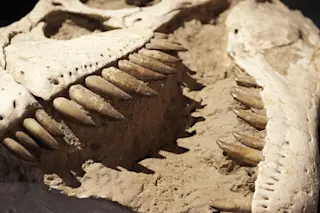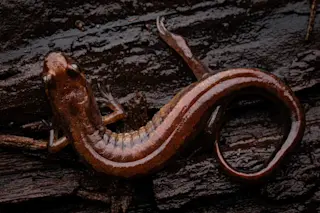You’ve definitely been told that the eyes are the window to the soul, but have you ever heard that the eye sockets are the window to the bite? Probably not. But now a new study in Communications Biology suggests that the eye sockets of large predatory dinosaurs, like Tyrannosaurus rex, developed different shapes that allowed them to deliver stronger bites.
Paleontologists have long looked into the eyes of dinosaur fossils for clues about how these creatures viewed and interacted with their world. For instance, the placement of dinosaur eyes has long been used to determine whether a specific species was more interested in targeting prey or avoiding predators. Furthermore, the size and shape of dinosaur eye sockets has more recently been used to determine species’ ability to see, and therefore remain active, in the dark.
Now, paleontologists have scrutinized dinosaur eyes once again and found something surprising. While most of ...















